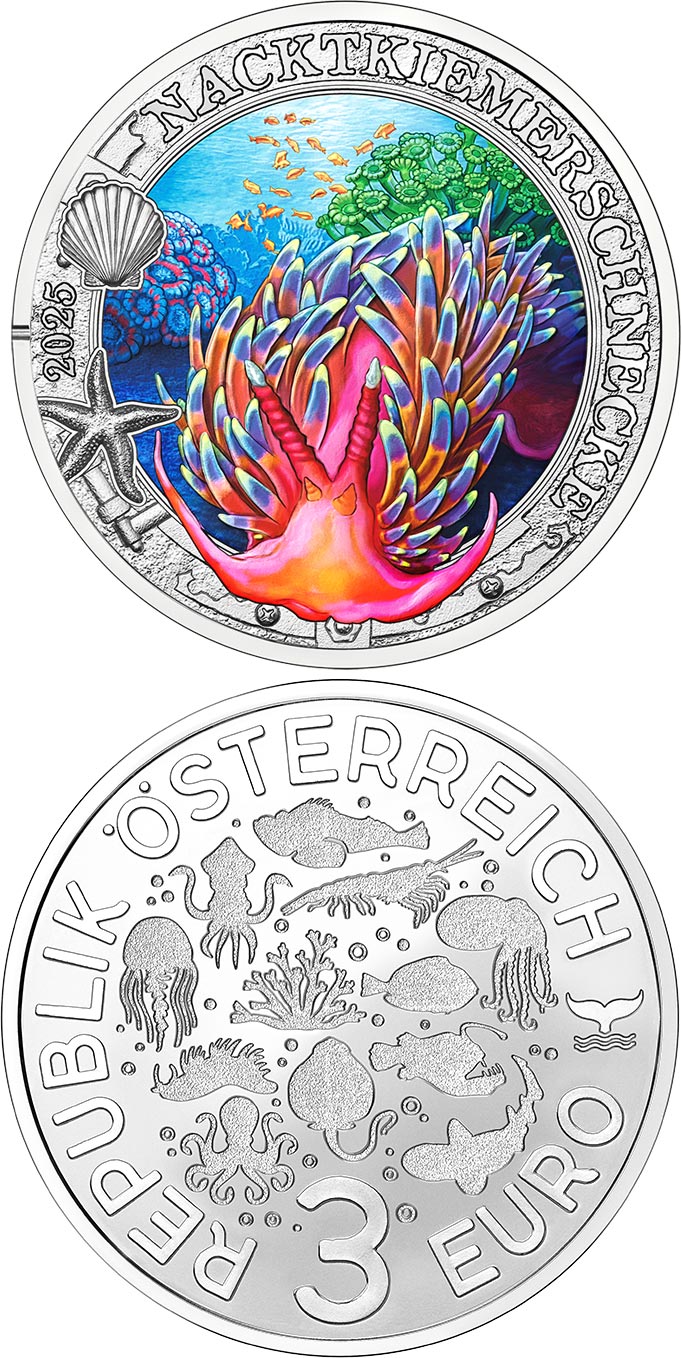3 euro - Doridid Nudibranch
Series: Austria - Luminous Marine Life

A perfect example of how nature creates art without even trying, the doridid nudibranch makes a feather boa look dull by comparison. Admired for its eccentric shape and vibrant colours, which transform under ultraviolet light, the shell-less sea slug features on the eleventh coin in the Luminous Marine Life series.
The dazzling coloration of many types of nudibranch is believed to serve as a warning signal to predators, which is enhanced by their ability to glow, especially at night, in deep water or in caves and crevices. The human eye cannot perceive this biofluorescence, but many predatory fish can.
Nudibranchs are not typical hard-shelled molluscs that rely on a shell for protection. Instead, they use potent toxins that make any fish attempting to swallow a nudibranch quickly spit it out. Moreover, nudibranchs can even repurpose the defence mechanisms of the creatures they feed on, such as sea anemones. They harvest the highly venomous stinging cells from the polyps of these flower-like animals and store them for future use. When threatened, they unleash the ‘stolen’ stinging capsules to fend off their attacker.
Nudibranchs are ‘simultaneous hermaphrodites’, meaning that they are both male and female at the same time. This is a significant advantage, as during mating, both partners can fertilise each other. Their egg masses –usually thousands of tiny eggs – resemble colourful flowers or garlands. From these eggs, larvae hatch and drift through the sea as part of the plankton for a short time. During this early stage of life, nudibranchs still have a microscopic shell. It is only when the larvae develop into small, bottom-dwelling snails that they lose their tiny shell entirely.